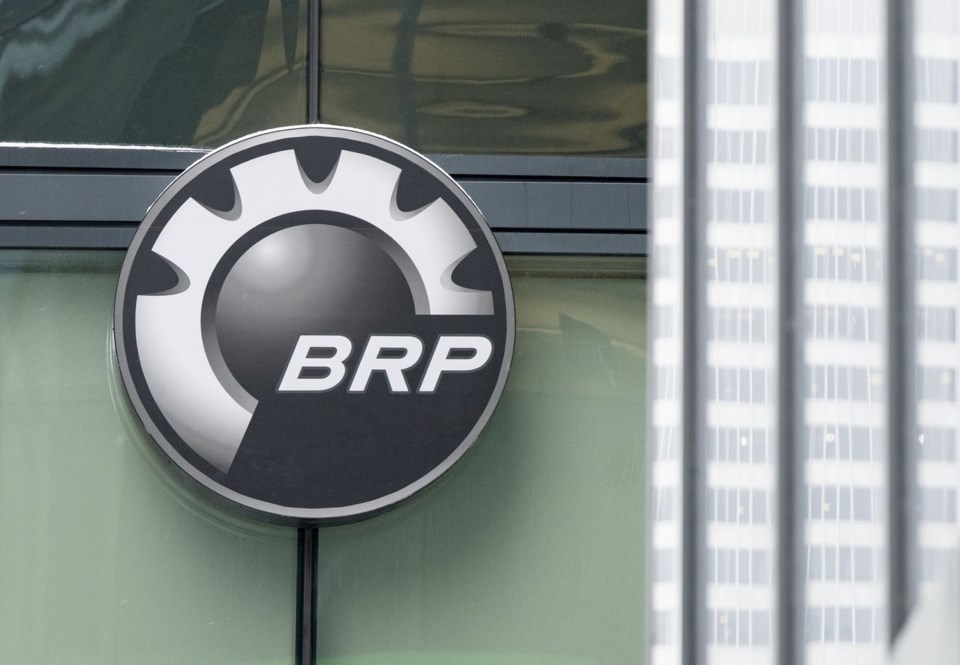Ski-Doo maker BRP Inc. has dealt with trade disputes before, but its chief executive says there's one aspect this time around that sets the current Trump administration's tariff regime apart.
“What is particular since the beginning of the year is the fact that tariffs are imposed and they are enforced the day after, which is a bit rocky,” José Boisjoli said in an interview.
While time has been a precious commodity, Boisjoli said BRP is taking the rapidly changing tariff landscape in stride, especially as compliance with the Canada-United States-Mexico trade agreement affords it some wiggle room.
“I think we have had some impact so far that we've been able to overcome. There is some cost, but we pass it on through normal inflation on the price of our vehicles. As long as the USMCA rule holds, we are in good shape.”
Still, tariffs and trade uncertainty prompted the company to defer its financial guidance for the 2026 financial year in March.
On a previous earnings call, Boisjoli noted that all BRP vehicles made in Canada and Mexico are compliant with the North American trade pact, which allows American buyers to avoid tariffs.
That compliance is key, since some 60 per cent of BRP’s revenue stems from the U.S. Most of the inventory sold there is made in Mexico — 70 per cent of total production happens south of the Rio Grande — or Canada, where Ski-Doos and some of its Can-Am three-wheelers roll off the line.
Boisjoli said tariff costs are manageable for the company, but are hitting consumer spending.
“The tariff uncertainty is creating a slowdown in the economy in many countries, and this is affecting demand more than what we were hoping for,” he said, noting demand shifts appear to be split by income level.
“In what we see -- and this is no change since the last two quarters -- the high-end product sells better than the entry-level product. And I believe the lower-income customers are more uncertain about their capacity to buy new products or to finance new products. And right now they are holding their purchase,” Boisjoli said.
Despite consumer spending softness, the company is pressing ahead with new product launches, including a new electric all-terrain vehicle and a new side-by-side vehicle.
Tariff uncertainty and its impact on demand also come amid a strategic effort by BRP to streamline its operations.
In July, BRP signed a deal to sell its Manitou pontoon boat business to the Marcott family, which owns Bentley Pontoons, as part of its plan to focus on powersports. The transaction is expected to close during the third quarter of the company's 2026 financial year.
The company launched a plan last year to sell its various marine businesses, excluding its Sea-Doo personal watercraft and related operations.
As BRP focuses on powersports, Boisjoli said the company has no plans for acquisitions.
"We always look to opportunities out there, but in our industry, there is not much opportunity, because we have more than 50 per cent market share on snowmobile and watercraft. You have the antitrust law that you need to respect. It's not an easy sector to do acquisitions, but we always look at what is possible,” Boisjoli said.
He is leading the repositioning of BRP as he prepares to step down as CEO by the end of the company’s fiscal year on Jan. 31, 2026.
He has served as BRP’s top executive for more than two decades, leaving a legacy of turbocharged products and steady growth. The board is currently conducting a search for BRP's next CEO.
Boisjoli piloted BRP from a struggling powersports outfit spun off from Bombardier Inc. in 2003 into a brand with worldwide reach that seized on growing demand for side-by-side vehicles, snowmobiles and personal watercraft.
“I've been with BRP for 36 years, I've been the CEO for 22. I am 68 years old, and at one point, I need to move on to something else," Boisjoli said.
In 2024, an unseasonably warm North American winter weighed on BRP's snowmobile sales, resulting in sharp reductions in profits. It cut snowmobile production by 30 per cent at the time due to the buildup of inventory that had been languishing in retailers' stockrooms across Canada and the United States.
“I have to admit that it was a big commitment with the dealers in 2024 to (reduce) inventory and to rebalance everything. Now, it's done. And we see the market stabilizing, which is a very good sign. And I think BRP ... is well positioned to grow within the industry.”
— With files from Christopher Reynolds in Montreal.
This report by The Canadian Press was first published Aug. 22, 2025.
Companies in this story: (TSX:DOO)
Daniel Johnson, The Canadian Press




